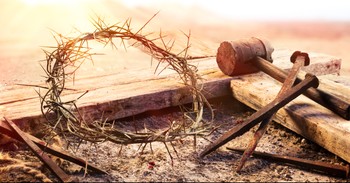
Christian mystics seek communion with God through their spirit. One of the most famous of all mystics was a sixteenth century Spaniard, St. John of the Cross. Like many before and after him, he took literally Christ's calls to give up the things of this world.
Things were not easy for John's family. His father came from well-to-do stock, but because he married Catalina, a woman his family considered beneath their rank, they disinherited him. After that, the couple made their living as poor weavers. John was born in 1542. His father died soon afterward, and Catalina was hard pressed to feed her boys. John attended a school for poor children and learned his letters. At seventeen he studied at a Jesuit school, dividing his time between classes and duties at a hospital.
John felt that the Lord wanted him to become a friar. He thought that by embracing poverty and going without food, he would grow closer to God. In 1563, he joined the Carmelite order, which had begun as a strict order, taking Elijah as their example and giving special devotion to the Virgin Mary.
John soon decided the Carmelites were not strict enough. He was about to transfer to another order when he met Teresa of Avila. Teresa was urging Carmelites to return to the original strict poverty of their order. John embraced Teresa's plan. With two other men, he undertook reform on this day, November 28, 1568. The three moved into a farmhouse which was in such bad shape that even Teresa did not think anyone could live in it. He renamed himself St. John of the Cross and became the spiritual leader of the new movement.
A few years later, John found himself in prison for resisting commands from a superior. In prison, he was scourged. But after nine months, he managed to escape and reappeared as leader of another community.
While in prison, John began a commentary on a poem he had written called "Dark Night of the Soul."
On a dark night, kindled in love with yearnings--oh, happy chance!--
I went forth without being observed, my house being now at rest.
In darkness and secure...
Without light or guide, save that which burned in my heart.
This light guided me more surely than the light of noonday...
Oh, night that guided me, oh, night more lovely than the dawn...
The "Dark Night" is a time of severe trial that God brings upon a soul to purge it of all wickedness and show it His glory. Many Christians have described such a state, but few as well as this Spanish mystic.
Bibliography:
1. Butler, Alban. Lives of the Saints. Westminster, Maryland: Christian Classics, 1981, 1956.
2. "John of the Cross (1) St." The Oxford Dictionary of the Christian Church. Edited by F. L. Cross and E. A. Livingstone. Oxford, 1997.
3. Zimmerman, Benedict. "John of the Cross." The Catholic Encyclopedia. New York: Robert Appleton, 1914.
4. Various encyclopedia and internet articles.
Last updated April 2007.
Photo Credit: Public Domain (engraving by Alessandri)/Wikimedia Commons


